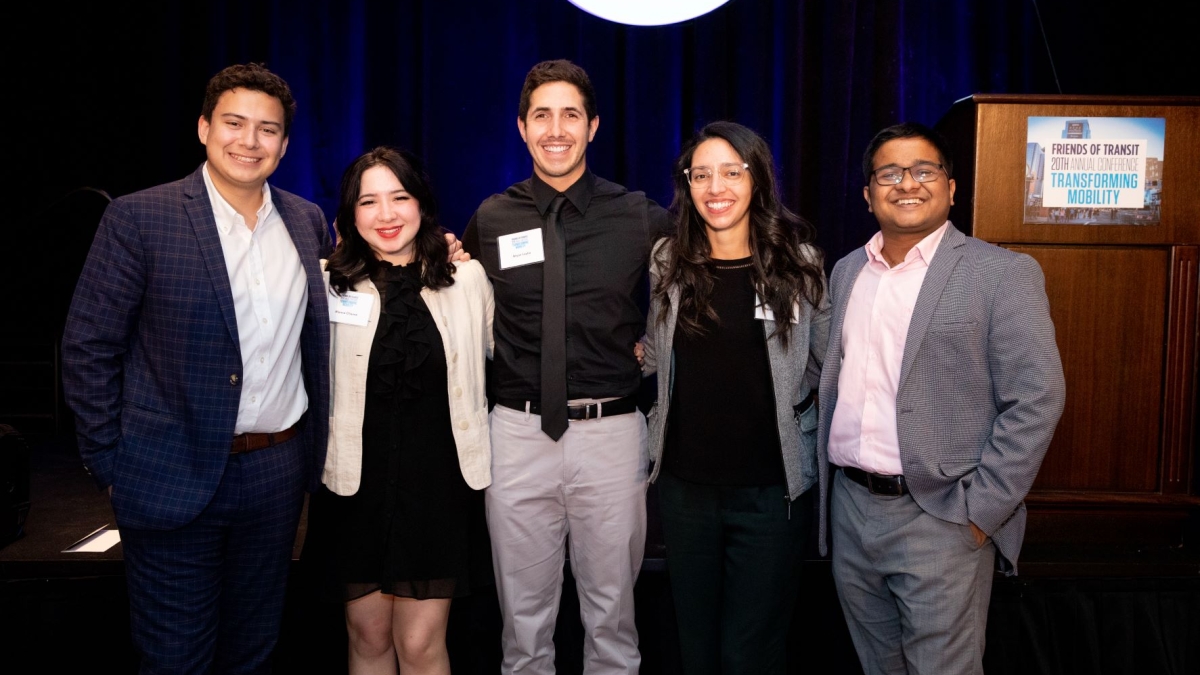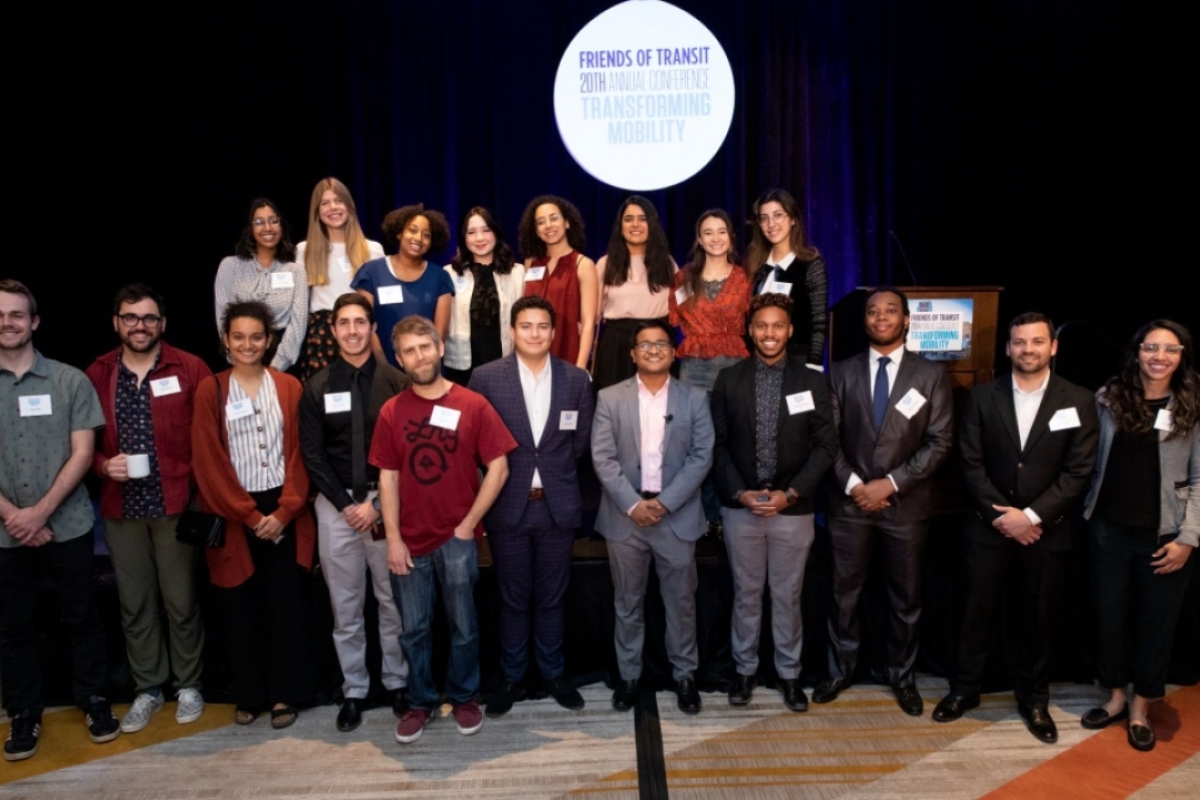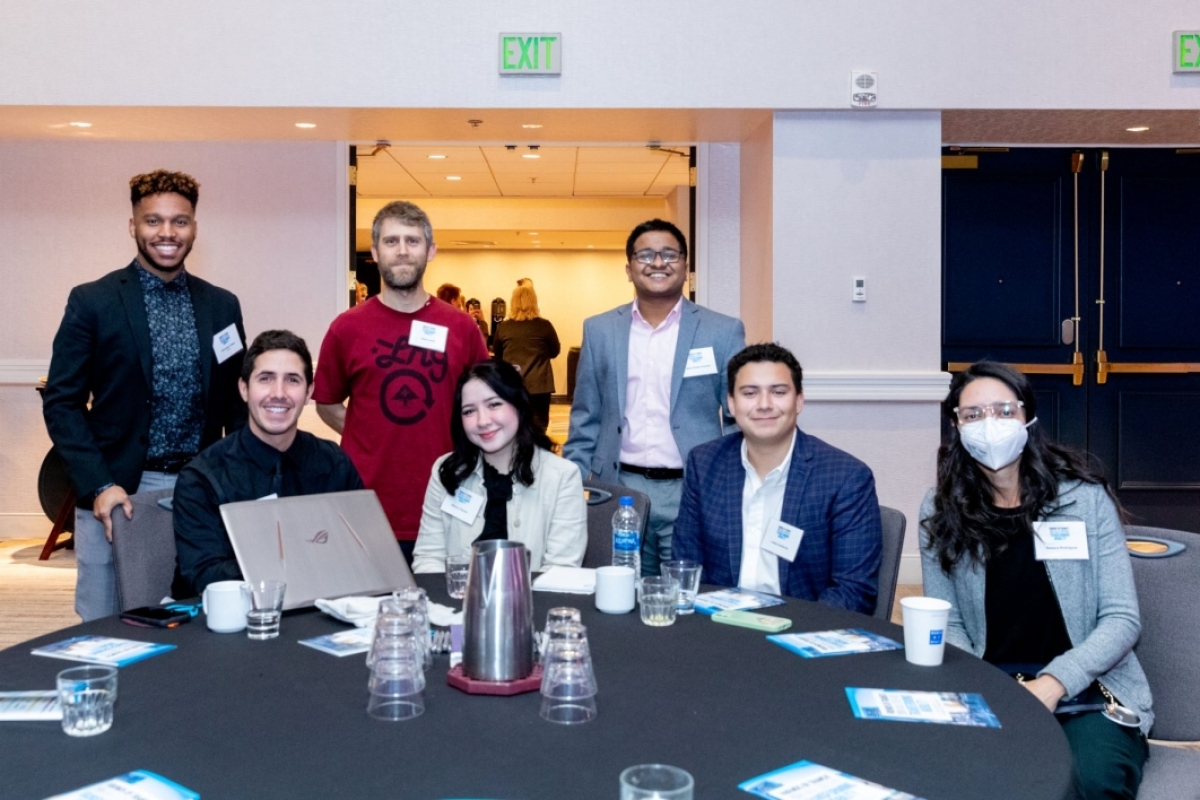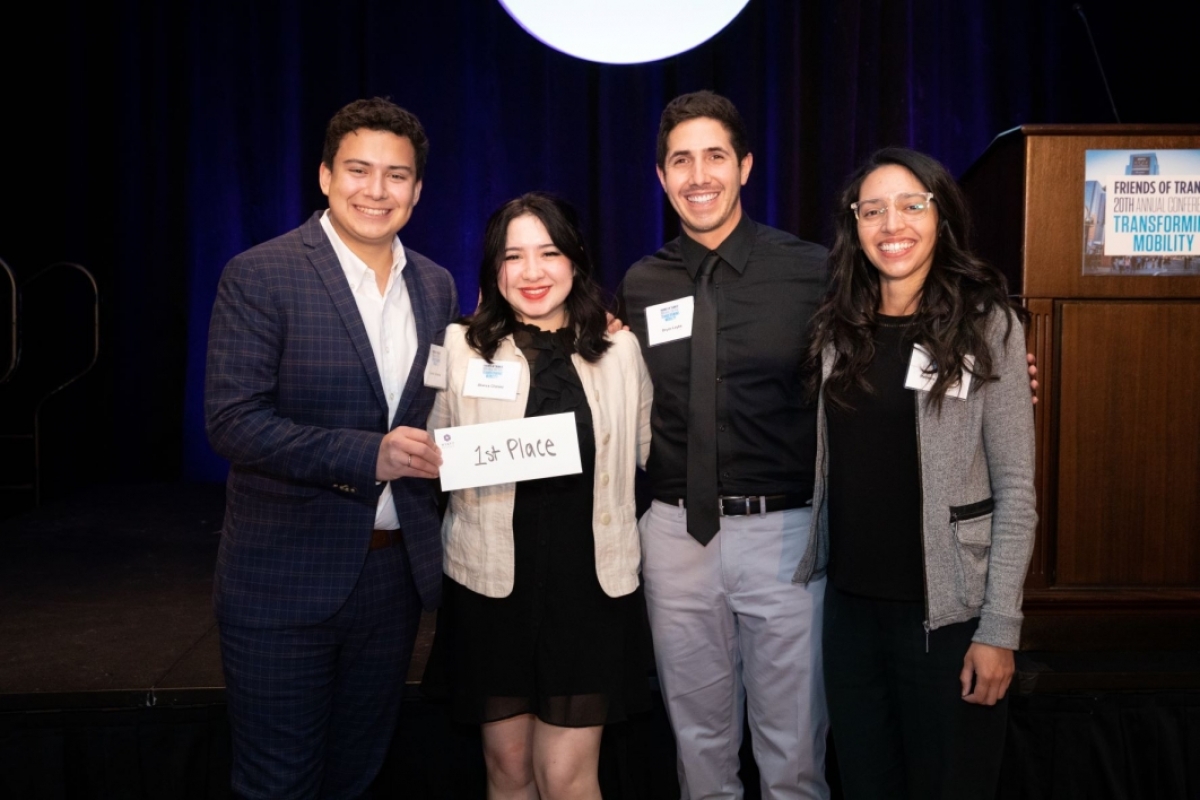ASU planning and sustainability students receive top awards for transportation innovations

From left to right: ASU graduate students Lukas Gutierrez, Blanca Chavez, Byran Leyba, Rebeca Rodriguez and Mihir Aranala.
Students in Arizona State University's master's degree programs in urban and environmental planning and sustainability solutions received first and second place in a statewide contest for their innovative ideas to instill confidence and increase ridership within the Valley Metro public transit lines.
The contest, hosted by the nonprofit Friends of Transit and the Arizona Transit Association, challenged undergraduate and graduate individuals and teams to propose inexpensive and easily implementable ideas for regaining rider confidence and security in the Phoenix metro area after another challenging year of navigating the COVID-19 pandemic. According to Valley Metro Ridership Reports, 2021 rider numbers on public transit decreased nearly 60% compared with pre-pandemic levels.
An ASU team consisting of School of Geographical Sciences and Urban Planning graduate students Blanca Chavez and Byran Leyba and School of Sustainability graduate students Lukas Gutierrez and Rebeca Rodriguez received the top honor for their rider rewards proposal, titled “Prickly Points Rewards Program.”
“Our idea offers a rider rewards program to instill rider confidence during the pandemic, increase ridership and support local businesses along the line,” said Chavez, who is pursuing a career in transportation planning. “Thinking of creative solutions to mending riders' relationship with transit is crucial right now.”
The students’ proposal included detailed case studies that evaluated the effectiveness of various transit-related rewards programs and reported promising results.
“Our team really wanted to put forward a rider confidence proposal that was not only implementable but worked to serve the community as well,” said Chavez. “Incentivizing the use of our public transit system while simultaneously supporting local businesses through a Valley Metro rewards program felt like a great way to respond to regaining rider confidence post-pandemic. Winning first place was a feat that our team was immensely proud of.”
Additionally, urban and environmental planning student Mihir Aranala took home second place for his transportation innovation proposal. In it, he suggests several efficient solutions that include free mask and wipes dispensers, social distancing stickers and creating displays that communicate the crowding status of transit vehicles based on capacity, among other solutions.
“Even though public transit is the most vital cog of the machine that is a city, it is severely underfunded in many cities worldwide,” Aranala said. “Coming up with easy, innovative solutions is a humble attempt at contributing to its improvement. A simple, inexpensive solution can end up making many people's lives better.”
The student teams presented their ideas at the Friends of Transit 20th Annual Conference: Transforming Mobility in front of an audience of local and national experts and industry leaders. The students were then judged by an audience poll based on their ideas and presentation skills.
“It was a privilege and a surreal experience to stand in front of 300-plus experts and industry leaders and present my ideas,” Aranala said. “It motivated me to conduct further research and bolstered my confidence to present my ideas in the forum boldly. The conference gave me much-needed exposure as a young planning student and vastly increased my professional network.”
More Environment and sustainability

From environmental storytelling to hydroponics, student cohort crafts solutions for a better future
A select group of students from Arizona State University's College of Global Futures, a unit within the Julie Ann…

2 ASU faculty elected as AAAS Fellows
Two outstanding Arizona State University faculty spanning the physical sciences, psychological sciences and science policy have…

Homes for songbirds: Protecting Lucy’s warblers in the urban desert
Each spring, tiny Lucy’s warblers, with their soft gray plumage and rusty crown, return to the Arizona desert, flitting through…




